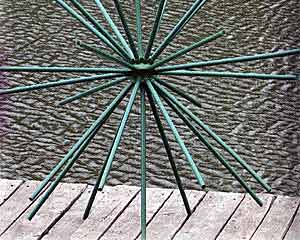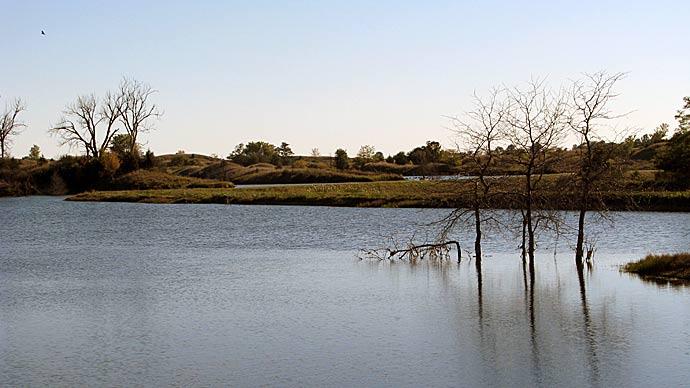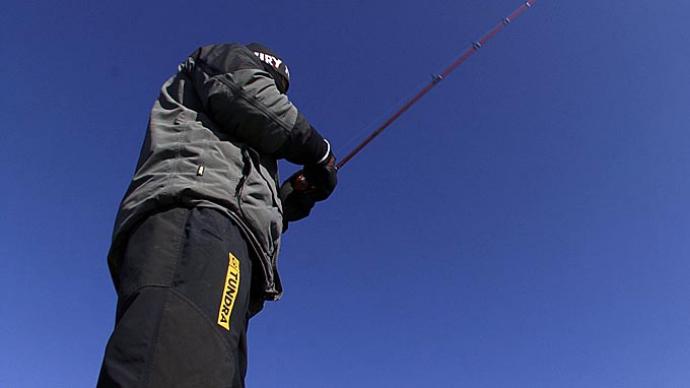
As a pond owner you may have several concerns when trying to decide if you should purchase artificial cover. What type to buy? How much you need? Where it should be placed? How much to put in each location? These are all common questions most people have. The real question to ask yourself is: What am I trying to achieve? Are you trying to improve catch rates or are you trying to bring more balance to your predator/prey ratio? Your answer will determine what type of cover you need. If you want to improve catch rates, you will want to add both dense cover for forage fish and less-dense cover for predator fish. If you want to improve the predator/prey ratio, it is best to focus the majority of your resources on dense cover for forage fish in water less than five feet deep.
Additional questions to ask yourself when looking to improve catch rates are: When you go fishing, where do you catch fish? What does the contour of the bottom look like in these areas? What cover (if any) are fish congregated around? Answering these questions will help you determine how much cover you may need and where the best places are to put it.
There are two general strategies to follow when installing artificial fish cover. The first is to build up on the structural characteristics of the pond and the second is to enhance the current cover that already exists.
Strategy One: Building up on the structural characteristics of the pond When biologists talk about adding cover to the structural characteristics of a water body we are referring to the contours of the bottom and the substrate type. These include creek channels, ledges, drop offs, points, humps, holes, gravel, sand, etc. These characteristics represent everything from gradual to drastic changes. Oftentimes when you locate areas where there is a quick change in structural characteristics, you will find that fish are drawn to that area more frequently.

It is important to note that as you identify these structural changes, you add clusters of fish cover to that location and don't just add one piece here and there. You want to add dense fish cover to hold baitfish surrounded by less-dense cover that predator fish can utilize. I prefer to go with at least 50% dense cover in these fishing locations, as forage fish are often a large part of why predator fish become attracted. As for placing the less-dense habitat around the perimeter, my recommendation is that you should include cover which allows predator fish to swim under it.
A great way to improve catch rates and attract large numbers of predator fish to a location is to create dense vertical cover — 10 feet tall that stretches from a couple feet below the surface down to the ponds bottom. Having a dense core is important because it helps produce a great deal of shade. Placing less dense cover a few feet away around the perimeter allows predators to congregate underneath in a discreet manor, and will have a synergistic effect on the habitat's ability to attract fish.
These tall, dense fish habitats work great placed in deeper water on top of, or just off points, especially when that point merges with the edge of a creek channel. They also work well when placed along the top or bottom of a drop off or when built vertically off the top of a steep ledge or channel. Keep in mind that the vertical height you are trying to achieve does not need to consist of only artificial cover. You can—and often times should—be utilizing the natural contour of the pond to add to the overall height of the habitat.
For ponds that have large flat areas of open water I encourage you to install some tall dense habitat. As you do this, keep in mind that density is a key component to truly creating a location where predator fish congregate regularly. In these open water areas you should consider a couple things. First and foremost, what predator fish species will be utilizing the cover? If they are open water species, such as hybrid stripers or trout, you can get away with having more isolated areas of vertical cover as these species will naturally visit these areas. If you are catering to largemouth bass or lie-in-wait predators such as muskellunge, you should consider creating a more substantial underwater reef. Build the reef vertically and within three feet of the surface where possible. Keep in mind creating open water habitat is more expensive as it requires more material than if building in shallower water along the perimeter or on the top of drop-offs.
It is the baitfish population in your pond that supports the predator population. The more you can do to protect these forage fish, the easier it is to maintain a balanced predator/prey ratio. For those who know their predator/prey ratio is out of balance, it is important to make sure you have promote plant and algae growth, while providing a sense of protection designated shallow water nursery areas that are loaded with dense cover. The goal in this situation would be to create areas that attract schools of young of the year (YOY) fish. It is very common for YOY to prefer waters that are less than three feet deep, as it has the tendency to be warm and from predators. If your pond is lacking these nursery areas, then creating them should be a higher priority than enhancing your pond with less dense, larger cover for predators.

This shallow water dense cover can be placed in several types of areas to serve as nurseries. Ideal areas are adjacent to bluegill spawning beds, in the back areas of coves, in shallow water along the shoreline, and especially along the shoreline of points that do not drop off until further off shore. These nursery areas should have a depth of five feet or less, and are often less than three feet deep.
As a fisherman, I like to add a couple clusters of less-dense cover near the nurseries that feeding bass can utilize. You will find that your bass will cruise these shallow waters (especially in the spring and summer).
Another very important benefit is that many small fish find the periphyton that grows on the fish cover to be a substantial food source. So, as you add fish cover to your pond you should consider roughing up the surface when possible to quickly allow algae and other organisms to grow and accumulate. Some manufacturers already do this for you and can save you a considerable amount of time and effort.
Lastly, note that fish tend to prefer darker, more natural fish cover. Installing cover that is lighter will silhouette the fish and, as a result, the cover is not as desirable since the fish are unable to hide as well. But, over time, most types of artificial structure covers with a dark mass of periphyton.
Strategy Two: Enhance the current cover that already exists The second strategy to follow when installing artificial cover is to maximize areas of existing cover. These can include but are not limited to trees, brush piles, old beaver huts, pallets, docks, stumps, and previously installed artificial cover. Enhancing these areas can be fairly simple as most artificial cover will work.
A good example of this would be a massive tree that fell into the water sometime over the life of the pond. It could be 10-15 years old with most of the branches now broken off and laying flat on the bottom, while the trunk is still supported well off the bottom parallel to the surface. This spot may be great for catching 1-2 bass on an average outing, but can be enhanced it to make it even better. Teaming vertical clusters of dense cover along both sides of the trunk in approximately 10 foot intervals will create a series of dense habitats connected through the middle with a log suspended several feet off the bottom. This type of enhancement will take a good fishing spot and turn it into a great fishing spot while saving money as you are utilizing natural cover as a fundamental component.
Keep on the lookout for other areas to enhance rather than always creating new fishing spots. It will help consolidate your predator fish while saving you money.
Artificial cover has become desirable due to its proven effectiveness. It is important that you plan your habitat installation prior to purchasing. This strategy will help determine what type of cover is needed, how tall it needs to be, and how much you will need. The high initial price tag for purchasing a large amount of habitat at once can be a put-off for some people. So, it is important to remember that habitat improvement is a process, and it is common to purchase and install cover over a few years for budgeting purposes. Designing and installing artificial habitat in ponds can be quite fun and rewarding, but may also feel intimidating. If you are not comfortable doing this yourself then ask a fisheries biologist for help.
David Beasley is the Lead Fisheries Biologist at SOLitude Lake Management, a lake, pond, and fisheries management services company serving the Eastern United States. He can be reached through their website www.solitudelakemanagement.com.



